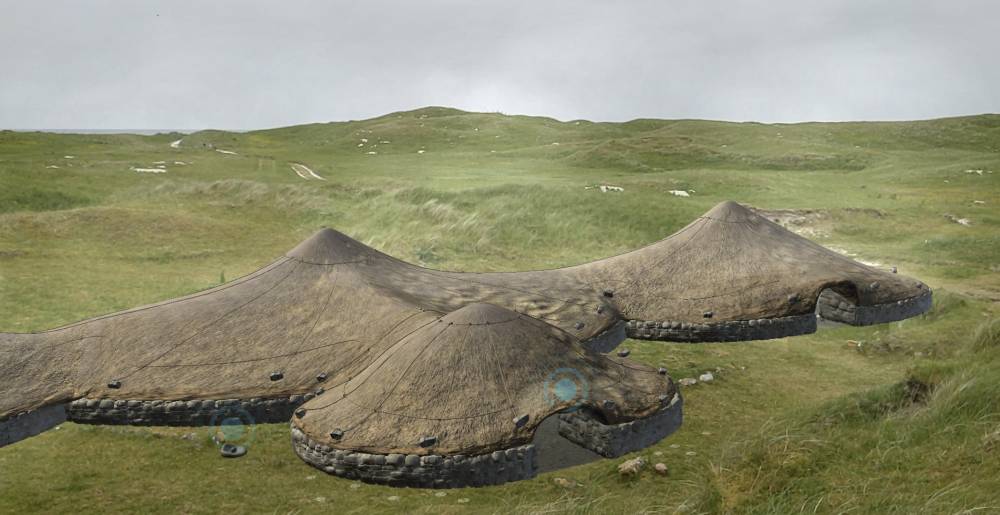Bronze Age Cladh Hallan
Image courtesy of the Uist Virtual Archaeology Project
Bronze Age Cladh Hallan
3,500 years ago in the Bronze Age, the machair was a bustling hive of activity. Roundhouses were built into the sand, with cultivated fields nearby. The sound of bird song and the smell of peat smoke filled the air. A short walk down the track from Hallan cemetery, Daliburgh leads to the remains of one of these settlements. The walls of three houses are still visible here at a site called Cladh Hallan. 500 years after they were built, the houses were abandoned and eventually collapsed. Sand blew in and covered their remains and in time, they were forgotten.
Over two thousand years later, their walls would be rediscovered during sand quarrying. The site was excavated by archaeologists from the University of Sheffield who shed light on the story of Cladh Hallan. An extended family lived here. They kept pet dogs and small, reddish-coloured cows, grew barley on the machair, and beachcombed for useful materials. They treasured their dead and kept them close, beneath the floors of their houses. The family also buried other things beneath the floor, including a pot containing a sheep’s shoulder blade, a limpet shell, scallop shell, and gneiss (a type of metamorphic rock) pebbles. We don’t know exactly why these things were buried; perhaps they believed it brought luck and health to their homes.
Ready to dig deeper? Cladh Hallan has been reimagined in stunning life-size Augmented Reality by a brand-new mobile app. Search ‘Uist Unearthed’ in the app stores now and discover more stories from Uist’s past.
The Uist Virtual Archaeology Project is led by Lews Castle College UHI, in collaboration with Comhairle nan Eilean Siar. The project is part-funded by the ERDF Natural and Cultural Heritage Fund (NCHF) administered by NatureScot. It is also funded by the National Lottery Heritage Fund (NLHF), Comhairle nan Eilean Siar (CnES), Lews Castle College UHI, and Stòras Uibhist.
Contributed by the Uist Virtual Archaeology Project
More information on visiting the area can be found here.
